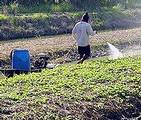 美國環保署允許殺蟲劑在國內水域施用、並可不受《淨水法》(Clean Water Act)監督的規定,日前遭到了上訴法庭的撤銷,美國環保團體7日歡慶他們的勝利。
美國環保署允許殺蟲劑在國內水域施用、並可不受《淨水法》(Clean Water Act)監督的規定,日前遭到了上訴法庭的撤銷,美國環保團體7日歡慶他們的勝利。
環保署在2007年11月27日對外公布了實行細則,內容闡述只要殺蟲劑符合《聯邦殺蟲劑、殺菌劑、滅鼠劑法》(FIFRA)認定,即不受限於《淨水法》的許可條件。 所謂《淨水法》,係針對排放到美國國內水源的污染排放進行管制,另外要求排放單位取得美國「國家污染物質排放限定系統」(NPDES)的認可。
在2007年實施該細則之前,有接近30年的時間, FIFRA核發的殺蟲劑標籤必須包含提醒標語,說明「除非有NPDES的許可,否則殺蟲劑不得排放進入湖泊、溪流、池塘或公眾水域。」
請願人分為兩個不同的團體,一方代表環境利益團體,而另一方則代表企業,雙方以不同的理由提出反對,認為該細則超越了環保署所能解釋的權限。
環保署為條例內容進行辯護,他們認為《淨水法》的用詞含糊不清,且該細則是《淨水法》的合理釋義。第六巡迴上訴法庭由三位法官組成合議庭,他們的決議文中寫道:「我們並不同意。《淨水法》內容並不含糊,我們認為環保署的實行細則並非《淨水法》的合理釋義,並撤銷該條例。」
「今天的這項決議是水、魚群和野生生物的一大勝利。」特巴特(Charlie Tebbutt)如此公開表示。他是「西部環境法中心」(WELC)的律師,同時也是反對實行細則的環境組織與有機農場的首席法律顧問。提起這項訴訟案的環保團體包含「海灣守護」(Baykeeper)、國家保育科學與政策中心(NCCSP),奧勒崗荒野協會(Oregon Wild)、聖約翰有機農場」(Saint John’s Organic Farm)、加州毒物替代協會(Californians for Alternative to Toxics)、加州釣遊魚保護協會(California Sportfishing Protection Alliance)、護水聯盟(Waterkeeper Alliance)、緬因環境協會(Environment Maine)、毒物行動中心(Toxics Action Center)、佩康尼克海灣守護(Peconic Baykeeper)、「峽灣守護」(Soundkeeper)等。
在企業這方提出請願的則有愛荷華農產品企業協會(Agribusiness Association of Iowa)、巴斯夫公司(BASF Corporation)、拜耳公司(Bayer CropScience)、美國作物永續發展協會(CropLife America)、三角洲協會(Delta Council)、斯塔茨門公司(Eldon C. Stutsman, Inc.)、富美實公司(FMC Corporation)、伊利諾肥料化學協會(Illinois Fertilizer & Chemical Association)、美國國家棉花總會(The National Cotton Council of America)、健康環境責任企業組織(Responsible Industry for a Sound Environment)、南方作物生產協會(Southern Crop Production Association)、先正達公司(Syngenta Crop Protection, Inc.)。
不過企業團體是希望進一步擴大豁免範圍而提出請願,他們認為該實行細則「既武斷又善變」,因為該細則一下將違反FIFRA的殺蟲劑視為汙染物,但另一方面又把符合FIFRA規範,但完全一模一樣的殺蟲劑列為非汙染物。法院則駁回企業團體的訴求,並將殺蟲劑殘留物與生物殺蟲劑均列入聯邦法律的管轄,因此必須受到《淨水法》的管制,目的要使對人類健康與生態環境的衝擊降到最低。
「舊金山海灣守護」(San Francisco Baykeeper)計畫主任喬克希(Sejal Choksi)表示:「這對我們國家的水資源是一項重大的勝利,光在舊金山灣區,每年就使用超過800萬磅的殺蟲劑。這些流入小溪,對無數種魚類、蛙類和其他水生生物造成傷害的有毒化學物質,即日起將受到《淨水法》的管制。」
Environmental groups today celebrated their victory as an appeals court vacated a U.S. Environmental Protection Agency rule that has allowed pesticides to be applied to U.S. waters without a Clean Water Act permit.
On November 27, 2007, the EPA issued the final rule, which states that pesticides applied in accordance with the Federal Insecticide, Fungicide, and Rodenticide Act, or FIFRA, are exempt from the Clean Water Act's permitting requirements.
The Clean Water Act regulates the discharge of pollutants into the nation's waters by, among other things, requiring entities that emit pollutants to obtain a National Pollutant Discharge Elimination System, NPDES, permit.
For nearly 30 years before adoption of the rule, pesticide labels issued under the FIFRA were required to contain a notice stating that the pesticide could not be "discharged into lakes, streams, ponds, or public waters unless in accordance with an NPDES permit."
Two different groups of petitioners, one representing environmental interest groups and the other representing industry interest groups, for different reasons opposed the rule as exceeding the EPA's interpretive authority.
The EPA defends the rule by arguing that the terms of the Clean Water Act are ambiguous and that the rule is a reasonable construction of the Clean Water Act. In their decision, a three-judge panel of the 6th Circuit Court of Appeals wrote, "We cannot agree. The Clean Water Act is not ambiguous. Therefore, we hold that the EPA's Final Rule is not a reasonable interpretation of the Act and vacate the Final Rule."
"The decision today is a victory for clean water, and for fish and wildlife," declared Charlie Tebbutt, Western Environmental Law Center attorney and lead counsel for the environmental organizations and organic farms that challenged the rule.
The organizations bringing the case include Baykeeper, National Center for Conservation Science and Policy, Oregon Wild, Saint John's Organic Farm, Californians for Alternatives to Toxics, California Sportfishing Protection Alliance, Waterkeeper Alliance, Environment Maine, Toxics Action Center, Peconic Baykeeper and Soundkeeper.
The industry petitioners were the Agribusiness Association of Iowa, BASF Corporation, Bayer CropScience, CropLife America, Delta Council, Eldon C. Stutsman, Inc., FMC Corporation, Illinois Fertilizer & Chemical Association, The National Cotton Council of America, Responsible Industry for a Sound Environment, Southern Crop Production Association, and Syngenta Crop Protection, Inc.
With the intention of broadening the EPA exemption, they argued that the EPA rule is "arbitrary and capricious" because it treats pesticides applied in violation of the FIFRA as pollutants, while it treats the very same pesticides used in compliance with the FIFRA as non-pollutants.
The court denied their claim and ruled that pesticide residues and biological pesticides constitute pollutants under federal law and therefore must be regulated under the Clean Water Act in order to minimize the impact to human health and the environment.
"This is a significant victory for our nation's waters. More than eight million pounds of pesticides are applied each year in the Bay Area alone," said Sejal Choksi, program director for San Francisco Baykeeper. "These toxic chemicals enter our creeks harming numerous species of fish, frog and other aquatic life and will now be regulated under the Clean Water Act."






